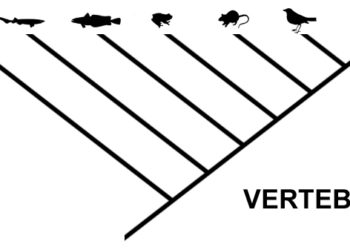A new initiative called “University Journals” has just been announced. The quotation marks I have put around the name are not scare quotes but simply a way to make it clear that we are talking about a specific service and not generic university journals. (Pro tip: put a distinguishing name in front of generic names to help with SEO, e.g., not Word but Microsoft Word.) From the website: “Fourteen universities from five European countries started a collaboration to set up University Journals as an alternative to the current journal system that requires authors to transfer their copyright or charges article processing charges.” This is a worthy aim. The question is how this new service, one of the now countless number of new services — which, of course, are additive to the many established services — will find a place in a marketplace that is already notable for its clutter. To be successful, “University Journals” will have to be as good as or better than other choices. Actually, “good” is not good enough; “better” is necessary because the existing services already have a running start. One imagines that those responsible for such services as PLOS and Scientific Reports have already begun to assess “University Journals” to determine if and how to respond.

“University Journals” brings some impressive firepower to the marketplace. Although the details of the service are sketchy (we have an announcement, but not yet a publicly perusable business plan), it is notable that it already has the support of fourteen universities and its “initial development is funded by the PICA foundation and the University of Amsterdam.” The model is open access (OA), but there are no article processing charges (APCs); rather all fees are paid by researchers’ parent institutions. The appeal to authors — no requirement of transfer of copyright — is clear. The service itself will leverage pre-existing infrastructure such as institutional repositories, which brings to mind what may have been the granddaddy of proposals of this kind: Raym Crow’s white paper written on behalf of SPARC. Raym published that report in 2002. The “University Journals” website as well notes that authors will share in the prestige of the universities that sponsor the service, which appears to be an attempt to offset the appeal of highly ranked journals of the subscription variety.
Before examining the question of how to make “University Journals” successful in a highly competitive marketplace, it’s important to consider what would constitute success. To be successful, must a new program take Elsevier to the cleaners? Must it generate a sizable cash surplus? Should it look to publish a large percentage (10%? 25%?) of all new articles? Or perhaps it should set out simply to publish all the articles from participating institutions or some meaningful subset of those. There may be other measures of success as well — for example, the number of accesses and downloads, a long-term preservation plan, the ability to bring in publications from around the globe, or the number of references in social media. Note that we have not even mentioned editorial quality yet and certainly not a measure of citations. There could be as many measurements as there are people on the planet, perhaps more. We should not assume that we should evaluate “University Journals” on the same basis that shareholders evaluate the performance of Wiley or Taylor & Francis or a professional society assesses the merits of its own publishing program.
Since “University Journals” must live or die in the marketplace, however, there is one measurement that cannot be ignored: the ability to continue as an organization. This is the question of sustainability. In a commercial world sustainability is easy to address: is the entity paying its bills, with some money left over? But “University Journals” is not working in that world. From an existential point of view, the service will be successful if the fees participating universities pay to use it (by paying their authors’ publishing expenses) are of sufficient size to keep the machine going, and if those institutions are making a long-term commitment. If that commitment is not long term — meaning in perpetuity — then a preservation policy is critical.
We have with “University Journals” a marketplace that is governed not by end-user demand (the heart of subscription publishing) but by the benefits to a sponsor — that is, the 14 institutions that have signed up thus far. “University Journals,” in other words, is a platform in the service of content marketing.
If it is successful in building the brand of the participating universities, and if these institutions determine that “University Journals” is the best and most efficient way to achieve that objective, “University Journals” will flourish. And let’s not fall into the common mistake of thinking that a brand is just a name. A brand is the sum of all the things conducted by the organization that is identified by that name, including quality, ethical deportment, social orientation, prestige, and more.
For “University Journals” to succeed by any measure, however, it is going to have to attract a lot of authors. Broadly speaking “University Journals” has two options: its member institutions can mandate that all their research staff publish exclusively with the service, or the service could simply be an option available to the institutions’ researchers, who may make the independent choice to submit materials elsewhere. (“University Journals” may also seek to attract authors who are not affiliated with participating institutions, with a different fee structure for them.) I would think that it would be difficult to mandate that all researchers publish only with “University Journals,” though you cannot tell until you try. Some authors may feel that such a mandate undermines academic freedom, and whether it does or not, is that an argument that institutions want to have? It seems more likely that publishing with “University Journals” will be an option for authors, not a requirement, and that means that the new service has to compete successfully with all the other publishing venues that seek the authors’ work.
Competing for authors, especially the most admired authors, is hard work — ask any publisher, whether of the traditional or OA variety. “University Journals” has a number of ways to compete, however, including a firm policy of no APCs and no requirement for a transfer of copyright. Are these enough?
No APCs is indeed a strong selling point, but authors are already aware that there may be no APCs or page charges or anything else if they submit their work to a subscription-based publication. Subscription publishers mostly monetize their activity downstream, with paying customers, and authors (mostly) get a free ride. There is a catch: the authors’ work must be of sufficiently high quality to leap over the editorial hurdle. But for an author who can do this, would not a subscription publication, especially one with a strong reputation, be a better first choice? What this suggests is that “University Journals” is really set up to compete with other OA services, not with traditional journals.
This new service, in other words, seems likely to be part of an editorial cascade, receiving many articles that were first submitted elsewhere.
As for no transfer of copyright for “University Journals,” it is increasingly less clear that this is a unique selling point either in principle or in practice. In principle other OA services require no copyright transfer, so where is the advantage? In practice even traditional publishers often permit authors to deposit copies of articles in institutional repositories, post preprints, and share their articles with other researchers who request them; and that is on top of the large number of articles that become OA after a brief embargo period. If we have seen anything in the past decade it is that a publisher no longer has full control of any particular piece of content, and that is even before invoking Sci-Hub and its many disruptions. “University Journals”’ competitive strength in this regard does not seem very strong.
Where “University Journals” can compete is by creating an additional suite of services — for example, full author websites, including CVs, discussion forums, and summaries of areas of interest — but this will come at an expense, and in any event many universities and services like ResearchGate already provide things like this. It could also choose to be highly selective, publishing only a small number of submissions, making publication seem difficult and therefore a matter of distinction, but this seems at odds with the spirit of the enterprise. “University Journals” has set itself the difficult task of identifying markers for quality without saying that not everybody will measure up to those standards.
Assuming that “University Journals” continues to receive ongoing support from its participating institutions — and why not? — and that there is a steady stream of manuscripts, it seems likely to find its place within the publishing ecosystem not at the top, where the most discriminating publications continue to hold court, but in the middle or bottom, where different authors will congregate for different reasons. An author may reserve her breakthrough piece for a highly ranked traditional publication (which requires no APCs), but more modest work or work that requires very rapid publication may find a home at “University Publications.” This new service, in other words, seems likely to be part of an editorial cascade, receiving many articles that were first submitted elsewhere. As such it can carve out a place for itself in the expanding universe of publishing venues. Let us wish it well.
Discussion
10 Thoughts on "The New “University Journals” in the Marketplace"
Thanks for this assessment. I wonder if it would be different if you were to reckon with open access mandates, especially in cases where there is no big deal covering APCs for open access publishing in (taditional) hybrid journals.
Just to chime in: could anybody point to me a high-level subscription journal which truly-truly doesn’t charge any author fees?
“Science” does. From what I remember from a recent conversation with their editor, it is called “figures in color” fee. In my field of research this means an APC, as practically all papers have figures in colour. I can’t find information about it in their instructions for authors, but I guess that it is only the lucky few who reach this stage, and frankly, they probably won’t reject the opportunity to publish in Science just because they need to pay 500$ for that.
Editing note: “University Journals” become “University Publishing” in paragraphs 5 and 7-9, is that intended?
Most humanities and social sciences journals to not charge author fees (though charging for color images in print–not at all a necessity in most articles–is common).
I continue to hope that academia will create its own universe of journals, in all fields, funded by what would otherwise go to the commercial publishers, and cut the latter out of the ecosystem entirely. This would have the added benefit of eliminating the predatory “journals” which simply exist to prey on the desperate or naive. The journals mentioned here sound like a potentially good first start.
An important question about this venture is how it will attract peer reviewers. I doubt whether the publications will develop much credibility without robust, independent peer review – and I cannot see obvious incentives for faculty members from other universities to supply this. If all the reviewing is being done within the publishing university, then this is just a house journal or something almost as close to vanity publishing as most predatory journals. It is distinguished only by its non-profit character. As has been frequently observed, leading journals in most disciplines are the expression of communities that unite scholars across a range of employers, providing an important check on the self-interest of any one university or department in promoting work regardless of quality. This does not necessarily make them loved by university managements, who would prefer the loyalty of scholars to lie with whoever is paying their salary but it is fundamental to the freedom and standard-setting of science and scholarship. If a university mandates its faculty to publish in a house journal, this seems to be an inevitable recipe for decline.
Good points, which show that this effort is doomed unless it becomes academia-wide, and the peer reviewing is spread widely among all institutions. Academic-sponsored journals need to become the prestigious standard, not an add-on or after thought.
This initiative is a good effort to make the scientific publishing market fairer, however I think that a discussion about the reviewing process should also take place. A double-blind review would be much better for science since it would avoid the side effects of friendships and enmities, but I haven’t seen this happening in my area (environmental engineering and chemistry), for example.
http://www.freejournals.org is another such initiative, although yet to get university sponsors. Ever more radical than this, is where academics publish their own journals, free of subscription or publisher charges.



